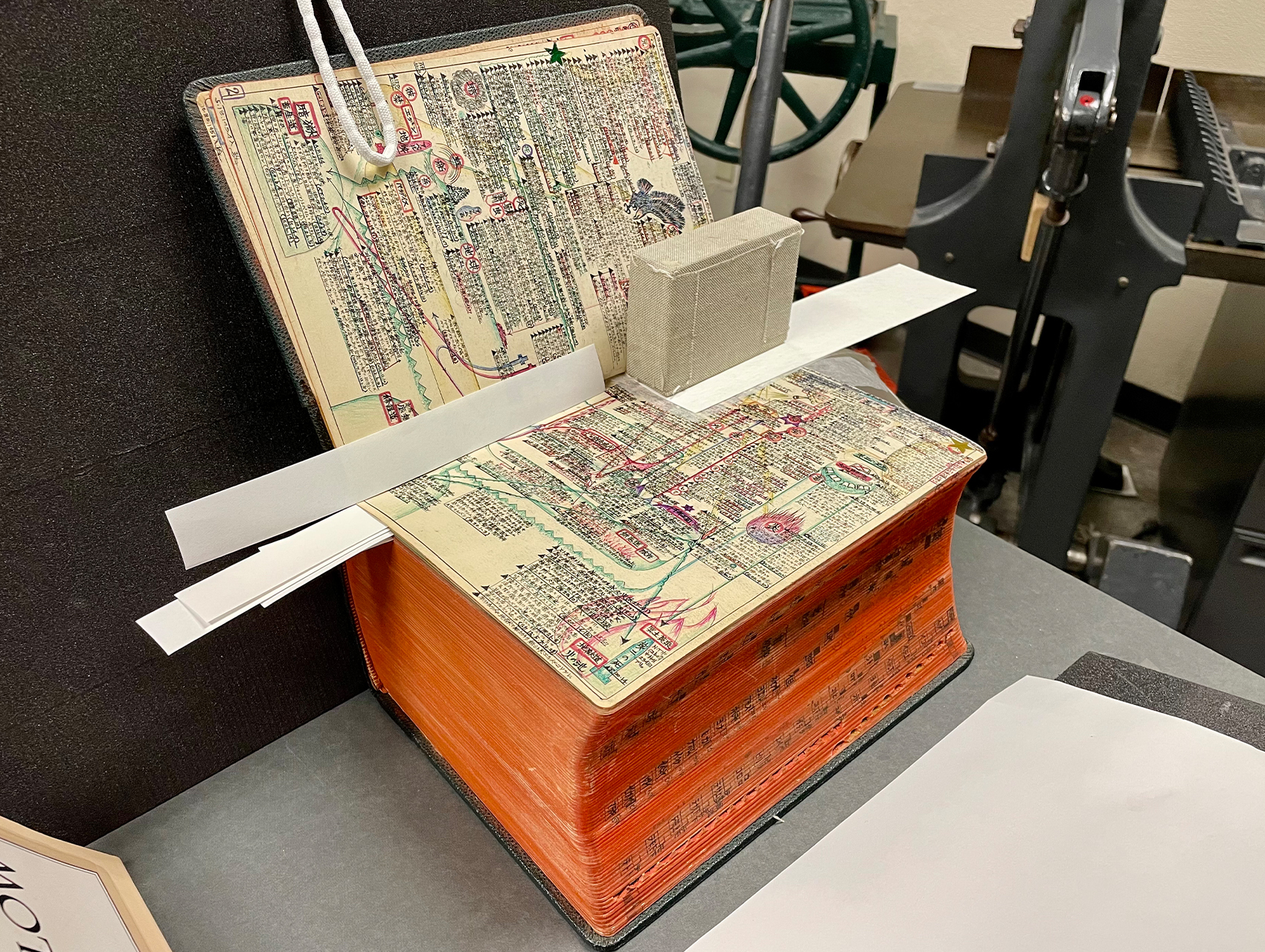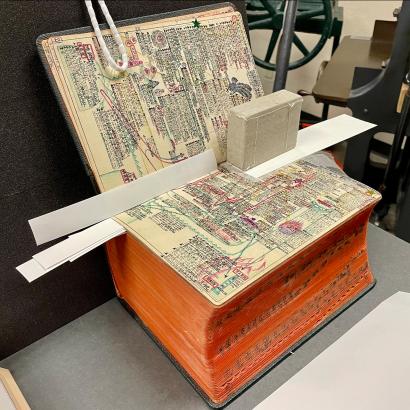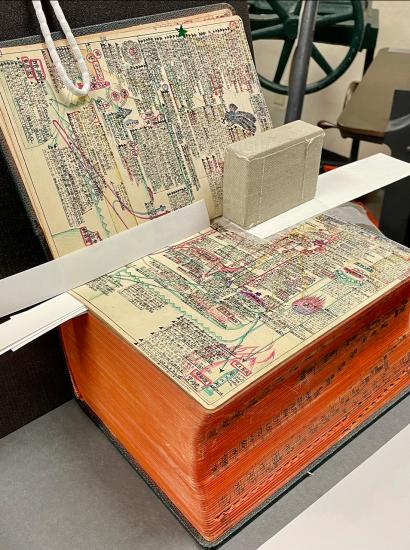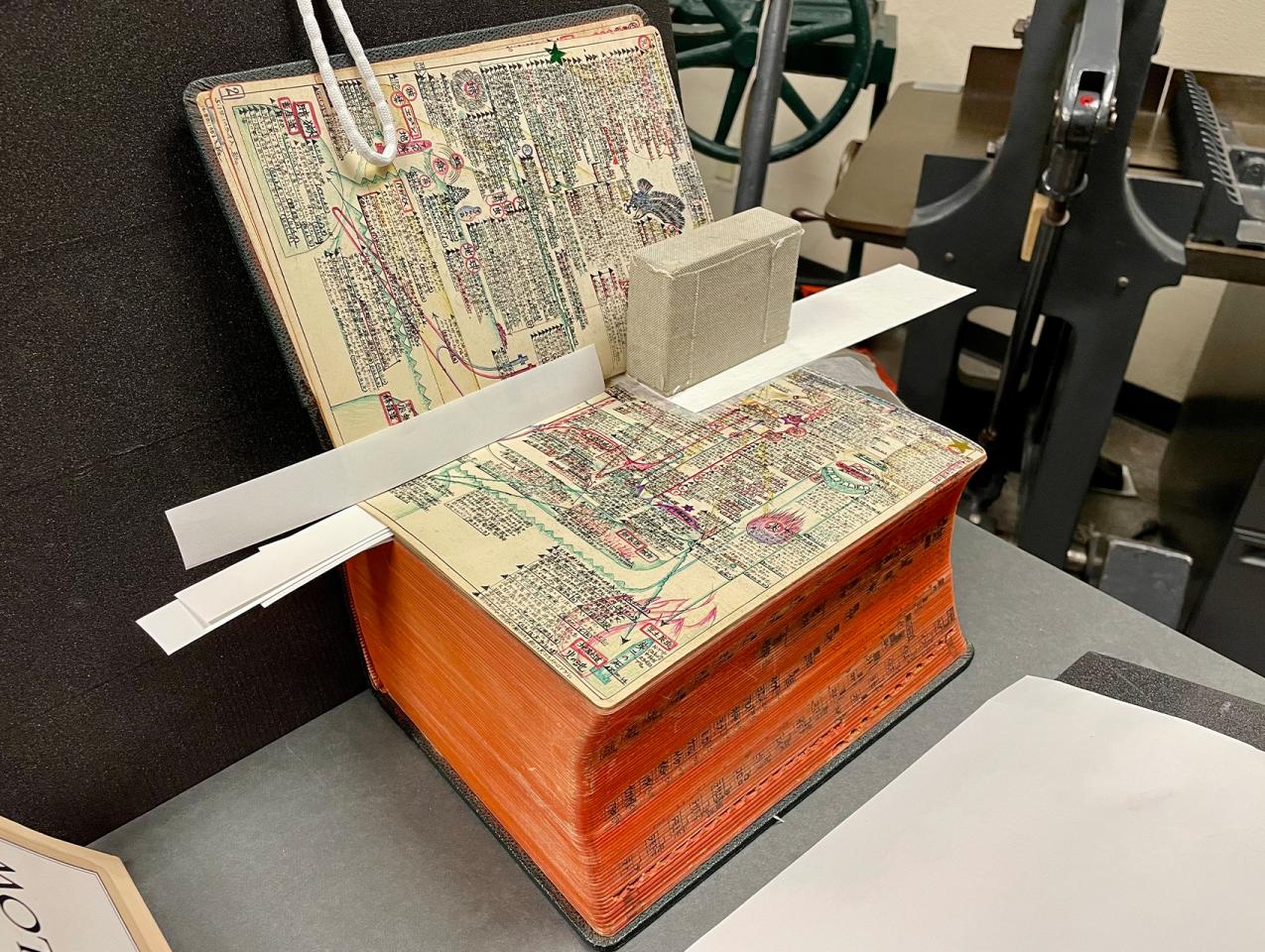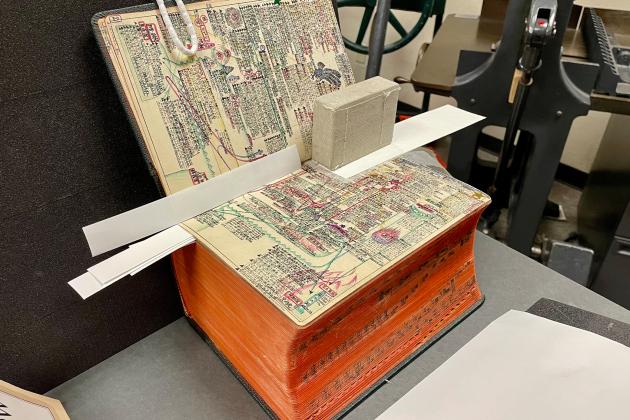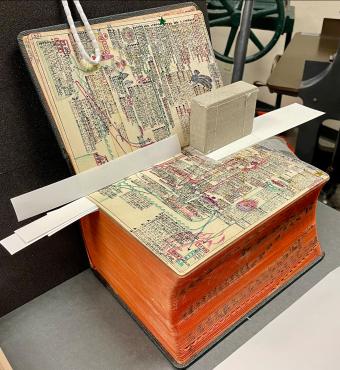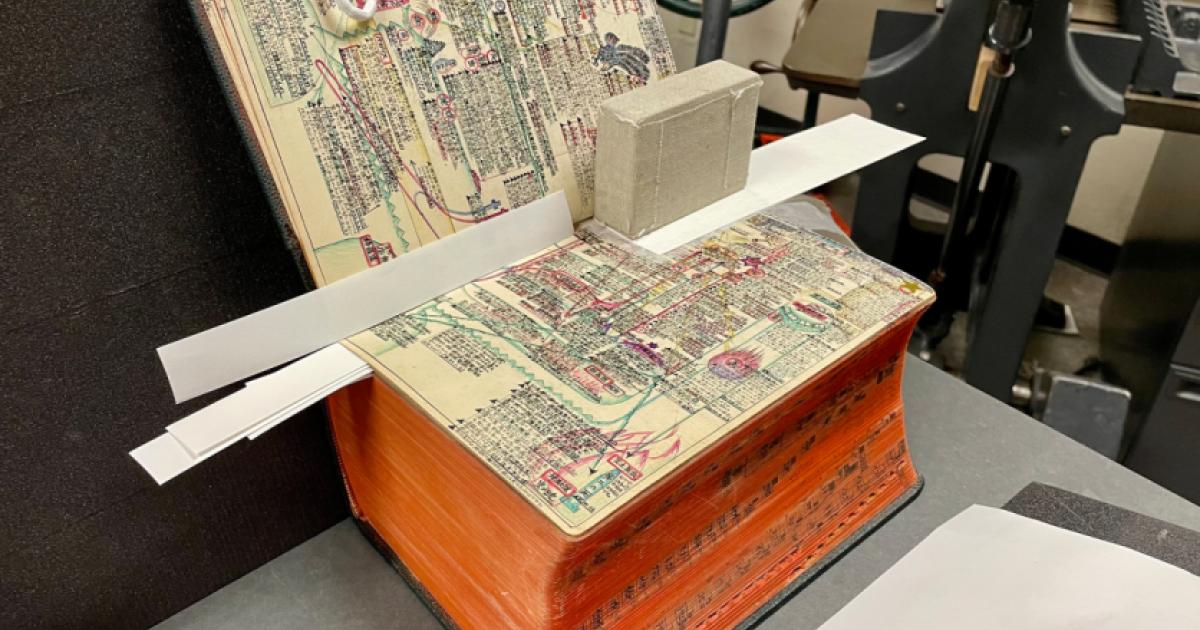By Laurent Cruveillier, Book and Paper Conservator
For its exhibition “Sutra and Bible: Faith and the Japanese American World War II Incarceration,” the Los Angeles–based Japanese American National Museum requested a loan from the Hoover Institution Library & Archives of two Bibles created by Masuo Kitaji, a captain in the Salvation Army, while he was held in a wartime internment camp.
As part of the loan agreement, a comprehensive assessment of the environmental and safety conditions for display of the Companion Bible and the New Analytical Indexed Bible was performed. Library & Archives book and paper conservator Laurent Cruveillier also assessed the condition of the Bibles themselves.
On this occasion, the conservator noted that existing damage to the Bibles could worsen if stabilization and consolidation work were not performed. The damage would also prevent the Bibles from being displayed in a functional and aesthetically pleasing way that would allow for their correct reading and interpretation.
A treatment proposal was submitted to the Preservation and the Exhibitions departments, as well as to Kaoru Ueda, curator of the Japanese Diaspora Collection, and a decision was made that both Bibles would undergo interventive treatment in the conservation lab of the Preservation department, in the Hoover Tower at Stanford University.
Damage with the Best Intentions
Good intentioned repairs most often cause more harm than good. In the case of the Bibles, “sticky tape,” or pressure sensitive tape, had been used to mend damage that had occurred before the object came to Hoover. In the case of the Companion Bible, the aging adhesive became cross-linked, like crystallized, and yellowed. It also straddled pages, causing tears. Due to its location on top of fragile media that would bleed in the presence of water or solvents, the tape carrier (plastic support) and the adhesive layer were removed mechanically, but the yellow discoloration left on the paper was left untreated.
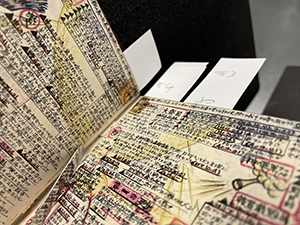
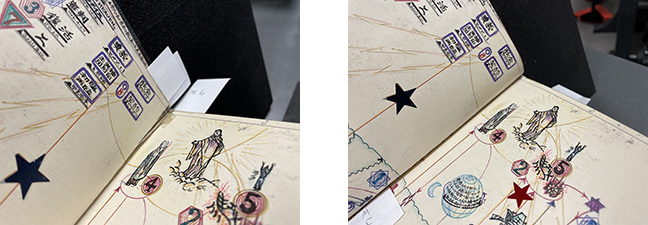
In the case of the New Analytical Indexed Bible, a more recent tape repair was poorly aligned and was causing tensions to the left made leaf, which is the leaf that results from pasting the decorative endpaper to the first leaf from the block of text pages. The adhesive was removed using a heated spatula and organic solvents.

Damage Causes Damage
In the New Analytical Indexed Bible, on the left side (fore-edge facing the reader), the two end leaves—the made leaf and the first adjacent flyleaf—were intentionally adhered together along the fore edge. Both had been torn off and would be completely detached if it were not for the previously mentioned piece of adhesive tape. This tension caused the silver gelatin photograph originally pasted on the made leaf, also partially detached, to get in the way of closing the book, which over time introduced a creased fold to the image, and cracks on its emulsion layer.
The leaves were repaired and reattached in their original alignment, and the photograph was pasted back in position.

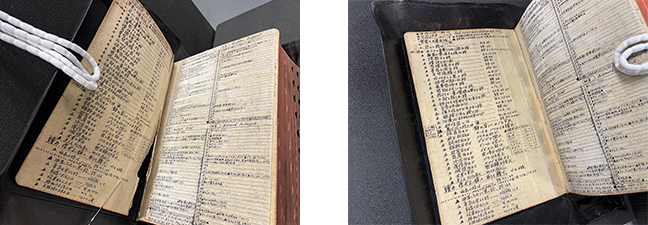
Hard-To-Reach Tears
The Companion Bible became a victim of its popularity. The tightly bound short-fiber machine-made paper of the left end paper and flyleaves could not hold up to the frequent opening of the volume by users to constantly access the remarkable drawings on the first pages. Over time, this handling caused folds at the head of the volume, near the gutter, which cracked and became torn on several pages—each action of opening the page occasioning a further extension of the tear.

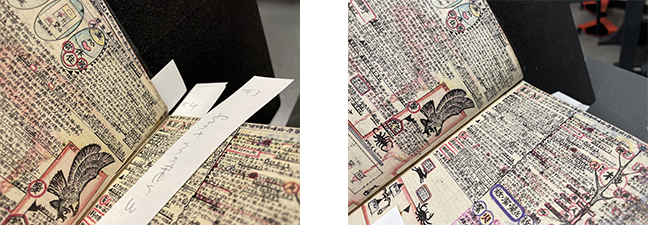
Materials and Techniques
All the repairs were done using Zin Shofu wheat starch paste, cooked and diluted with deionized water [4:1 (v,v)], and two weights of unbleached Kozo Japanese tissue, a long-fiber, light, and highly resistant paper (~12, and ~7 gsm).
In areas covered in text and drawings, with fugitive inks and media, the conservator used minute bundles of single parallel Kozo fibers to stitch the tears in between lines and drawings, using magnification—in the same way Masuo Kitaji reportedly used a magnifier to write in microscopic Japanese on these pages.

A corollary of conservation work is gaining access to parts of objects that would otherwise be inaccessible. In the case of the New Analytical Indexed Bible, we now know that there is no text between the made leaf and the first flyleaf on the left, that are pasted together, and that the drawing of Mount Fuji on the outer part of the right made leaf is printed on a fragment of paper, the verso of which also shows printed text.

Coincidence or not, one finds a similar drawing of Mount Fuji on the outer case of the Companion Bible, as if they echoed each other.
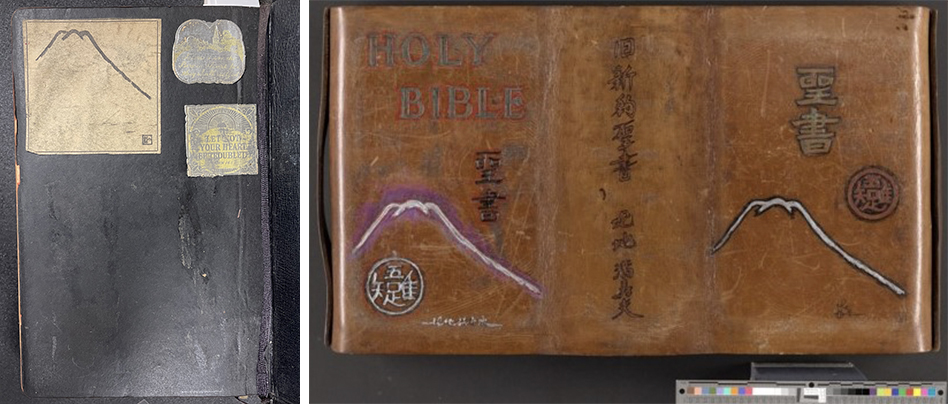
The conservator hinged the drawing back in place instead of pasting it, to allow easy future access if needed. This Bible may indeed require further treatment, as a group of blocked pages, stuck together, was left untreated until the substance that adheres the pages together is identified.
Finally, to prepare the Bibles be displayed out of their cases, on cradles, compensation blocks were created to make up for their volume in the outer cases, to help these cases retain their structural integrity.

The comprehensive condition assessment and all the conservation work carried out on the Kitaji Bibles were documented.
The Kitaji Bibles are currently on display at the Japanese American National Museum, 100 N. Central Avenue, Los Angeles, through January 8, 2023.




